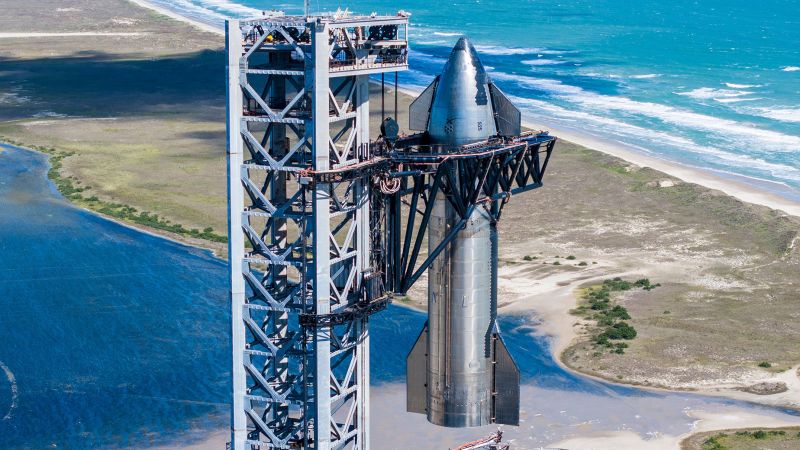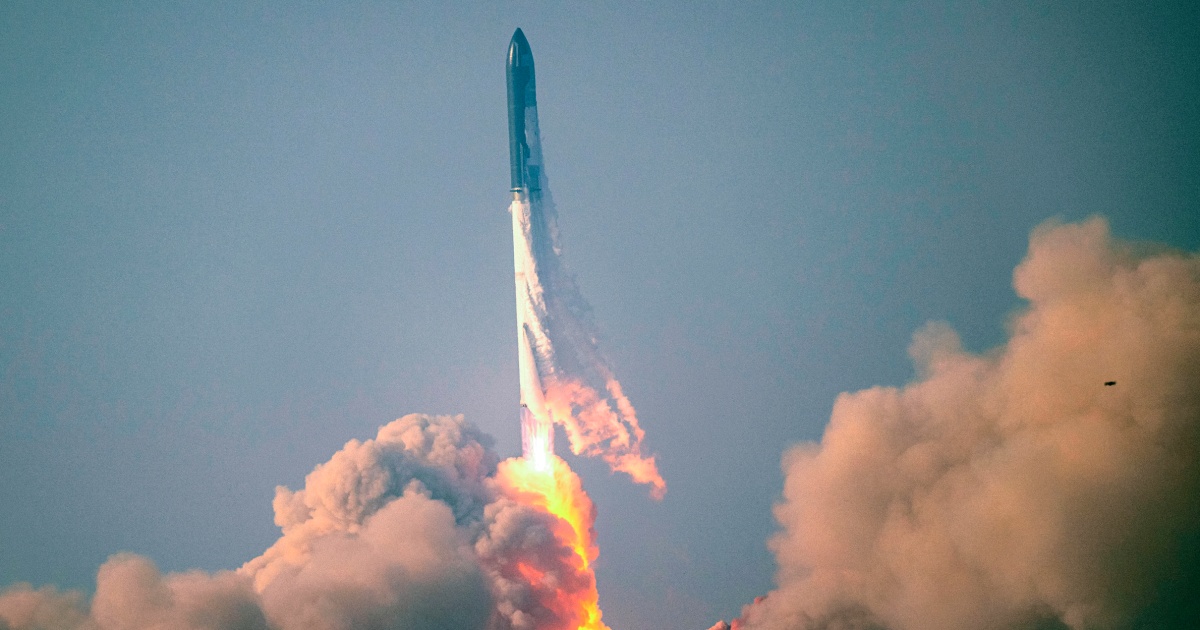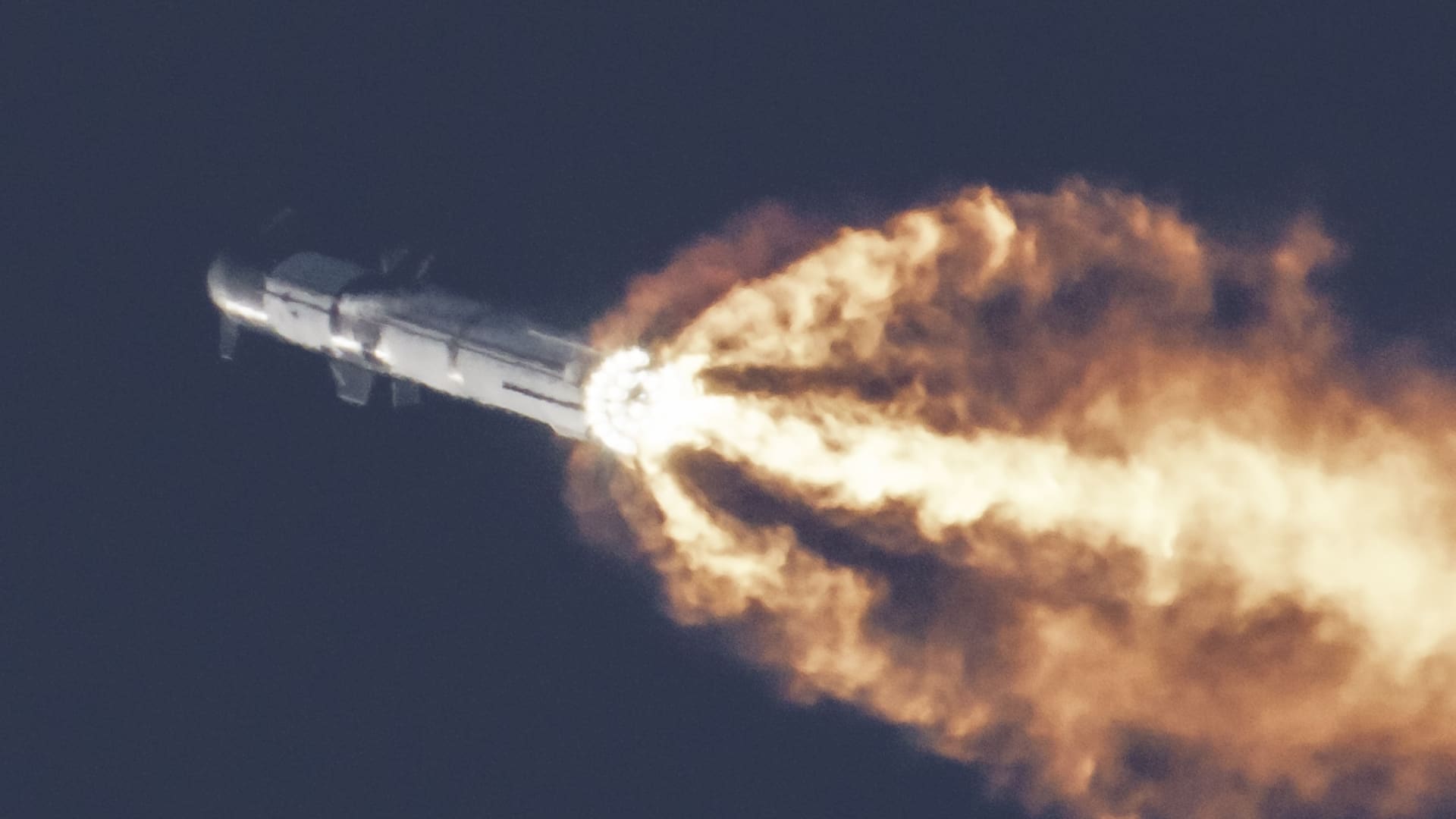SpaceX has been granted a license by the U.S. Federal Aviation Administration (FAA) for the second test launch of its Starship rocket, a step forward in the development of the next-generation space transportation system.

Also Read: Scientists Discover Oldest Black Hole Formed 470 Million Years After Big Bang
The license comes after a series of investigations, and safety reviews following the debut launch in April. The upcoming test, scheduled for Friday, November 17, is to demonstrate the advancements in the Starship system, and concerns during the initial launch.
Starship, the first-stage booster known as Super Heavy and the upper-stage spacecraft, is a fully reusable rocket designed by SpaceX.
Standing at nearly 400 feet tall, it holds the title of being the largest and most powerful rocket ever built. The vision behind Starship involves enabling the settlement of Mars, aligning with founder CEO Elon Musk.
The FAA’s recent announcement of granting a license for the second Starship launch that SpaceX has successfully met all safety, environmental, policy, and financial requirements.
The regulatory journey has been involving thorough investigations into the April launch mishap, safety reviews.
The FAA, responsible for licensing commercial rocket launches, corrective actions on the company, which the company addressed in preparation for the upcoming test.
Also Read: Kilonova Explosion Could End Life on Earth for 1,000 Years
One aspect of the regulatory process involved an environmental review, particularly focusing on the impact of new water-deluge system on the biodiversity hotspot surrounding Starbase in South Texas.
The FAA, in consultation with the U.S. Fish and Wildlife Service (USFWS) under the Endangered Species Act, conducted a Biological Assessment.
The USFWS found no concerns, clearing the path for the FAA to proceed with the launch permit. SpaceX has several upgrades and modifications.
These include a hot-stage separation system, a new electronic Thrust Vector Control (TVC) system for Super Heavy Raptor engines, reinforcements to the pad foundation, and a water-cooled steel flame deflector.
These aims to address the challenges during the first test flight, making sure a more successful. SpaceX has set the target launch date for Friday, November 17, with a two-hour launch window opening at 8 a.m. ET.
The company plans to livestream the event, providing viewers with real-time coverage and insights into the test flight. The launch will take place at Starbase facility in Boca Chica, Texas.
The success of the Starship rocket is for both SpaceX and NASA. SpaceX has been selected by NASA to develop a lunar lander variant of Starship for the Artemis III mission, aiming to return humans to the moon by 2025.
Also Read: Rats have the Power to Imagine, Research Reveals
The increased capacity and reusability of Starship hold to revolutionize space exploration, making it a main player in future missions to the moon and Mars. While the second test launch represents a milestone, SpaceX acknowledges the challenges ahead.
Elon Musk has highlighted a “50% probability of reaching orbital velocity,” addressing the complexity of achieving objectives.
The upcoming test will provide valuable data for further improvements, guiding SpaceX toward future milestones and operational space missions.
Despite the FAA’s clearance, environmental and cultural heritage groups may pose challenges. A group of advocates previously sued the FAA over environmental concerns related to the damage caused by the first test flight.
It remains to be seen whether legal actions will be taken to halt the upcoming launch, addressing the ongoing balance between technological advancements and environmental preservation.
The success of the Starship program holds implications for NASA’s Artemis program. NASA has selected SpaceX to develop a lunar lander variant of Starship for the Artemis III mission, planned for late 2025.
The reusability of Starship could play a main role in achieving NASA’s goals of taking humans to the Moon.
Also Read: Marsquake: Scientists Surprised by Source of Largest Quake Detected on Mars






/cdn.vox-cdn.com/uploads/chorus_asset/file/24920856/F5TgruvaYAAqZbD.jpeg)
















